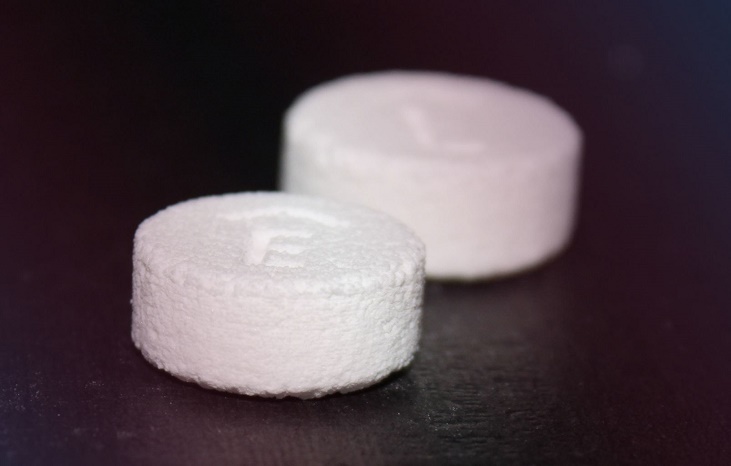U.S. Food and Drug Administration (FDA) has approved the first ever 3D printed drug for the treatment of epilepsy. Aprecia Pharmaceuticals announced on August 3, 2015, that SPRITAM is the first ever drug approved by FDA that is manufactured using 3D printing technologies. The drug is expected to be available in the first quarter of 2016. Recently, 3D printing technology has revolutionized the healthcare and biological systems with its cost-effective manufacture of custom prosthetics and living tissues.
SPRITAM was manufactured by 3D printing layers of the powdered drug, binding the layers of powder together, and then blowing away the excess powder. The unique structure of the drug helps dissolve the pill faster than an average pill. This can be a relief for seizure patients who often are prescribed large, hard-to-swallow pills.
See Also: This Pakistani startup is tapping into a forecasted $21 billion 3D printing industry

Don Wetherhold, Aprecia CEO, said on the occasion, “By combining 3-D printing technology with a highly prescribed epilepsy treatment, SPRITAM is designed to fill a need for patients who struggle with their current medication experience. This is the first in a line of central nervous system products Aprecia plans to introduce as part of our commitment to transform the way patients experience taking medication.”
3D printed medications can allow doctors to prescribe an exact dose which will be completely uniform and tailored for the individual patient. This may eventually lead to printing personalized medicine in one’s own home. While the world is busy utilizing the potential of 3D printing technology, 3D printers cannot be imported without NOC in Pakistan. Pakistani government has yet to realize the potential of the technology and formulate proper regulations for its safe usage in the country.
What do you think about 3D printing technology and its usefulness in Pakistan? Let us know in the comment section below.
Via Forbes




